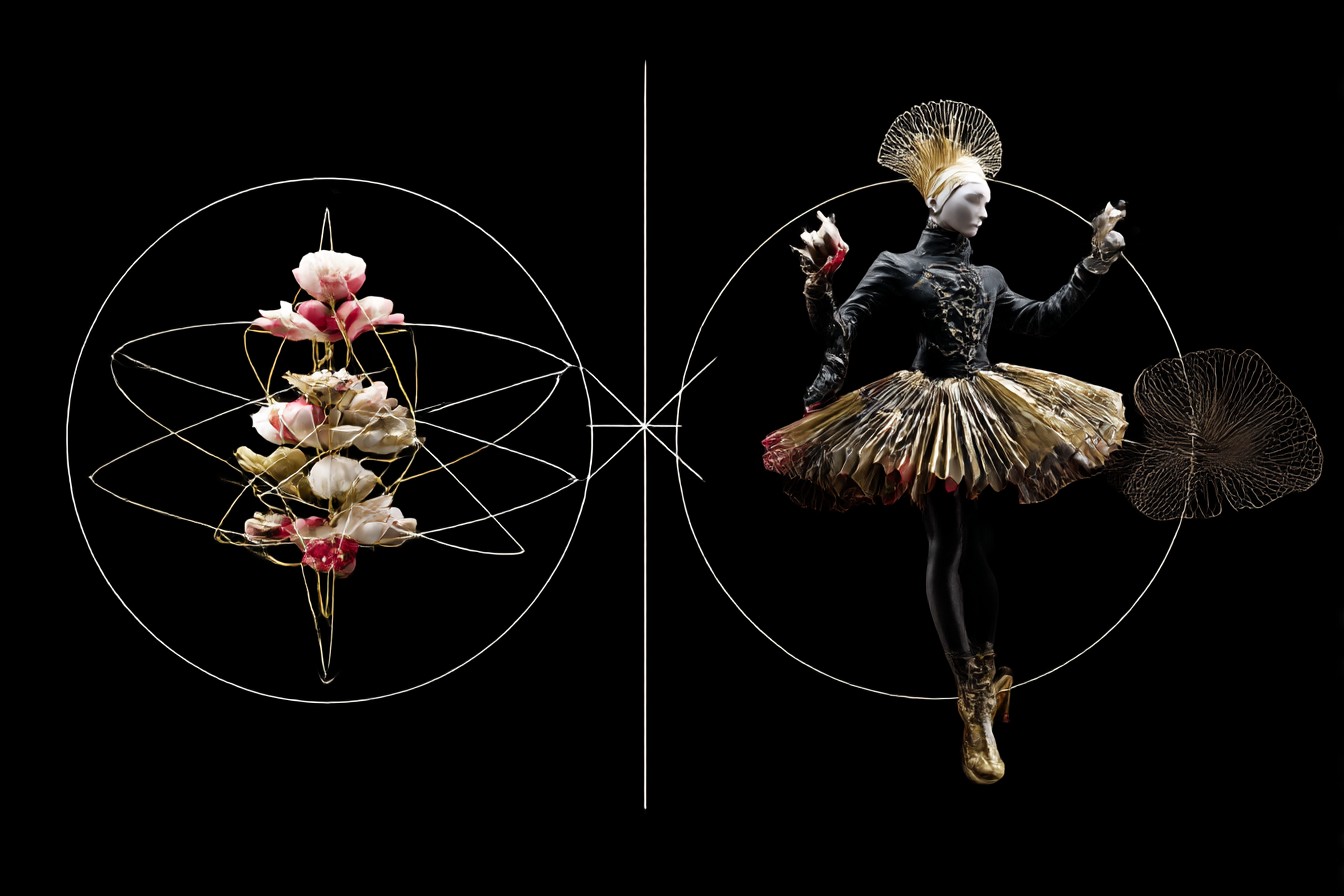The text arrived at midnight: “EMERGENCY. Anniversary tomorrow. Do I get the vintage map of where we met that he mentioned once or the expensive coffee machine he needs for his new office? HELP ME EMMA.” My friend Natalie was deep in the classic gift-giver’s dilemma—torn between a gift guaranteed to elicit an emotional response and one that would be undeniably useful. Heart versus head. Sentiment versus practicality. The eternal gifting conundrum.
I called rather than texted back because this particular gifting quandary requires nuance rather than a quick either/or response. You see, the sentiment-versus-practicality question isn’t actually binary at all, despite how we tend to frame it. It exists on a spectrum with infinite gradations, and the “right” answer depends on a complex matrix of factors that I’ve spent probably too many hours of my life analyzing.
“Why can’t it be both?” I asked her, to which she let out the specific sigh of someone who has about nineteen hours to solve a problem and doesn’t appreciate philosophical musings. Fair enough. But my question wasn’t just theoretical—sometimes the either/or framing of the dilemma blinds us to creative solutions that might actually deliver both emotional resonance and practical value.
In Natalie’s case, after some discussion, we realized the vintage map could be professionally framed to hang in the new office alongside the coffee machine. The combination acknowledged both her husband’s nostalgic side and his practical needs. Her follow-up text the next day—”He actually got a bit teary over the map and has already used the coffee machine twice. GENIUS.”—was gratifying, though hardly surprising. The best gifts often live somewhere in the middle of the sentiment-practicality continuum, or thoughtfully address both ends simultaneously.
This particular gift emergency got me thinking more systematically about how we navigate this common gifting dilemma. Over many (many) cups of tea, I started mapping out the factors that should influence where on the sentiment-practicality spectrum a particular gift should fall. Charlie found my scribbled diagrams and decision trees hilarious—”Only you would create a gifting algorithm, Em”—but the framework has proven surprisingly useful for making these decisions less stressful and more successful.
The first factor that deserves serious consideration is the nature of the occasion itself. Some gift occasions are inherently more practical, while others practically demand emotional resonance. Housewarming gifts, for instance, traditionally lean practical—items that help establish or enhance a new home. Wedding gifts, with their connection to relationship milestones, generally benefit from at least some sentimental component. Birthday gifts can fall anywhere on the spectrum depending on other factors, while anniversary gifts almost always require some emotional element to acknowledge the relationship being celebrated.
I learned this lesson rather painfully after giving my parents a set of high-end kitchen knives for their 30th wedding anniversary. Objectively, it was a lovely gift—they needed new knives, these were excellent quality, and they both enjoy cooking. Yet their response was noticeably subdued. My mum later gently explained that while they appreciated the practicality, anniversary gifts feel special when they acknowledge the relationship itself, not just daily needs. “The knives could have been from anyone who knows we cook,” she pointed out. “Nothing about them said ‘I’m celebrating thirty years of your marriage.’” Lesson thoroughly learned.
Contrast this with my friend’s reaction to a highly practical baby shower gift—a customized “parent survival kit” filled with genuinely useful items for the chaotic newborn phase. Despite being essentially a collection of practical problem-solvers, it was received with genuine emotion because the occasion—preparing for a first child—is one where practical support is itself a form of emotional care. The usefulness was the sentiment.
The second major factor is the recipient’s gift-receiving language. Just as some people primarily express and receive love through physical touch or acts of service, some people fundamentally experience gifts through their practicality while others prioritize emotional symbolism. My brother Mark, for instance, approaches every gift with the unspoken question “What does this actually do?” A decorative object with sentimental associations but no practical function will never delight him the way even a mundane but useful tool would. My friend Sonia, meanwhile, keeps every card and meaningful trinket she’s ever received, each one attached to a specific memory or relationship. For her, a gift’s emotional resonance matters far more than its functionality.
Understanding someone’s gift-receiving language requires observation rather than assumption. When they open presents, do they immediately look for what it does, or do they react first to the meaning behind it? When they mention gifts they’ve treasured, are they talking about items they use regularly or ones that hold special memories? My gift journals include notes on these preferences precisely because they’re such important clues to finding the right sentiment-practicality balance.
A particularly telling indicator is how someone displays or stores previous gifts. During a recent visit to my cousin’s home, I noticed that the practical kitchen gadgets I’d given her over the years were prominently displayed and showed signs of regular use, while more decorative or sentimental items were tucked away in cupboards. This observation led me to adjust my gifting approach—focusing on high-quality practical items for her while saving my more sentimental gift ideas for recipients who would truly appreciate them.
The third factor in my framework concerns the current life circumstances of the recipient. During certain periods, practicality becomes particularly valuable—new parents functioning on minimal sleep, someone who’s recently moved house, a person starting a demanding new job or recovering from illness. During these phases, gifts that acknowledge and ease everyday challenges often carry more emotional weight than purely sentimental items.
I witnessed this shift when my meticulously organized friend Kate had twins. Previously, she’d favored beautifully symbolic gifts with thoughtful meanings attached. But when I asked what she wanted for her birthday three months after the babies arrived, her immediate response was, “Anything that makes some part of my day easier. Literally anything.” The meal delivery service subscription I arranged was received with more genuine emotion than any sentimental gift I’d ever given her—because in that moment, practical support was precisely what spoke to her emotional needs.
Conversely, during times of emotional significance—grief, major life transitions, milestone celebrations—gifts that acknowledge feelings and memories often resonate more deeply than practical items. When my friend was mourning her father, the kitchen appliance she’d mentioned needing seemed suddenly inappropriate. Instead, a collection of blank journals with a note acknowledging that grief needs space for expression became the right choice—less practical in an everyday sense but perfectly suited to her emotional reality in that moment.
The fourth element considers the nature and stage of your relationship with the recipient. Early in relationships, whether romantic, friendly, or professional, practical gifts with a small sentimental component often feel most appropriate—acknowledging your developing connection without presuming too much emotional depth. As relationships mature, the balance can shift more freely between practical and sentimental depending on other factors.
I’ve found this particularly relevant in professional gifting. A purely practical gift for a new colleague makes sense, while a long-term mentor might appreciate something with more personal significance that acknowledges your shared history. My most successful gift for my former boss after working together for five years wasn’t the standard bottle of wine but a vintage edition of a business book she’d mentioned was transformative early in her career—practical enough to be appropriate in a professional context but with added layers of meaning that acknowledged our established relationship.
Perhaps the most nuanced factor in my framework is what I call the “joy gap” analysis—identifying where the recipient currently experiences either practical frustrations or emotional emptiness that a gift might address. Sometimes the most appreciated gifts are those that solve a specific problem or fill a particular emotional need the person is experiencing right now.
This might mean noticing the cheap kitchen timer they constantly complain about or the broken umbrella they keep forgetting to replace, then providing a high-quality version they wouldn’t buy themselves. Or it might mean observing their mention of missing connection to a particular place or person, then finding a gift that restores that emotional link. The key is attentive listening for clues about where either practical friction or emotional longing exists in their current life.
My colleague James had been talking for months about wanting to get back into photography, a passion he’d abandoned during busy years of career-building and young children. For his birthday, rather than choosing between a practical gift or a sentimental one, I focused on this specific joy gap—finding a photography class specifically designed for parents looking to better document their children’s lives. The gift addressed both his practical reality (limited time, existing family responsibilities) and his emotional desire (reconnecting with a meaningful hobby), making it far more successful than either a household appliance or a purely decorative item would have been.
Budget considerations inevitably influence the sentiment-practicality balance as well. With limited funds, focusing on one dimension often yields better results than trying to inadequately address both. A thoughtfully selected £15 practical item that perfectly solves a specific problem will generally be more appreciated than a £15 item that attempts to be emotionally meaningful but lacks the quality or specificity to truly resonate. Similarly, a modest-budget sentimental gift with genuine personal significance usually outperforms a cheap version of a practical item the recipient could buy themselves in better quality.
I’ve found that sentiment tends to elevate practical gifts up the value scale, while practicality grounds sentimental gifts in daily life. The handmade ceramic mug becomes special not just because it’s beautiful but because it’s the perfect size for the recipient’s morning coffee ritual. The practical kitchen knife becomes meaningful when the handle is made from wood sourced from the recipient’s hometown. This integration creates gifts that work in multiple dimensions rather than forcing a choice between head and heart.
Some of my most successful gifts have been what I call “practical vessels for sentimental content”—useful items that carry or enable emotional meaning. Recipe boxes filled with family heritage dishes. Digital photo frames preloaded with meaningful images. Quality tools engraved with significant dates or messages. These gifts resolve the false dichotomy by making the practical item itself a carrier of sentiment.
For my dad’s retirement, I gave him high-quality gardening tools (the practical component) engraved with GPS coordinates of significant places from his life and career (the sentimental layer). Each time he uses them—which is almost daily—the practical value is enhanced by the emotional connection. For my friend’s first home purchase, I assembled a toolbox filled with reliable household essentials (practical) but added a personalized manual with advice and encouragement from various friends who’d been through the first-time homeowner experience (sentimental). The combination acknowledged both the practical challenges and emotional significance of the milestone.
Of course, despite all this analysis, I still get it wrong sometimes. I once gave my grandmother a digital photo frame, thinking it perfectly balanced practicality (easy viewing of family photos) with sentiment (family memories). I’d failed to consider her discomfort with technology and her preference for physical photos she could hold and arrange. The gift gathered dust until my next visit, when I spent an afternoon helping her print and organize physical photos instead—a much better match for her specific preferences.
These missteps are inevitable but instructive. Each one refines my understanding of both individual preferences and broader patterns in how people relate to gifts. The sentiment-practicality framework isn’t about finding a mathematically perfect formula but about making more thoughtful, recipient-centered decisions that acknowledge the complex reality of how gifts function in human relationships.
I suspect I’ve thought about this particular gifting dilemma more than most normal people would consider reasonable. Charlie certainly thinks so, given his amusement at finding my notebooks filled with gift decision trees and sentiment-practicality matrices. But I maintain that this framework has practical value precisely because it acknowledges the emotional complexity of gifting—the way that presents function both as useful objects and as tangible expressions of our understanding of another person.
The binary framing of “sentimental or practical” ultimately does a disservice to the rich possibilities of thoughtful giving. The most memorable gifts often find ways to be both—addressing real needs while acknowledging emotional connections, solving everyday problems while carrying deeper meanings. Sometimes this means choosing a single item that serves both purposes; other times it means pairing complementary gifts that each excel in one dimension.
So the next time you find yourself torn between the vintage map and the coffee machine, remember that the question isn’t always either/or. Sometimes the answer is both, sometimes it’s one now and the other later, and sometimes it’s a third option that addresses the specific intersection of practical needs and emotional desires that makes your recipient uniquely themselves. The sentiment-practicality spectrum offers infinite possibilities for those willing to look beyond the false dichotomy to the complex, nuanced reality of what makes a gift truly meaningful to its recipient.
And as for Natalie’s anniversary dilemma? Three years later, the vintage map still hangs in her husband’s office, right above the coffee machine that’s been used almost daily since he received it. Neither gift would have been wrong on its own, but together they created a more complete expression of their relationship—honouring both their shared history and their ongoing daily life. Which, when you think about it, is exactly what an anniversary gift should do.






Leave a Reply